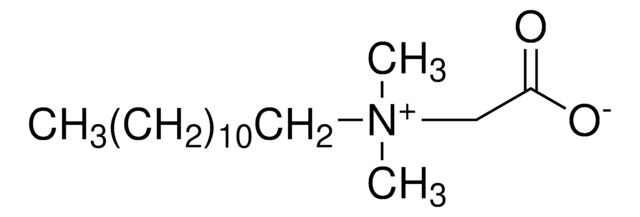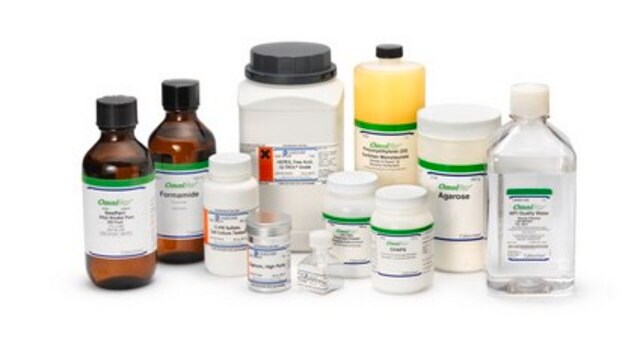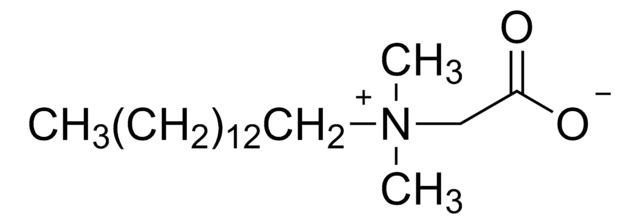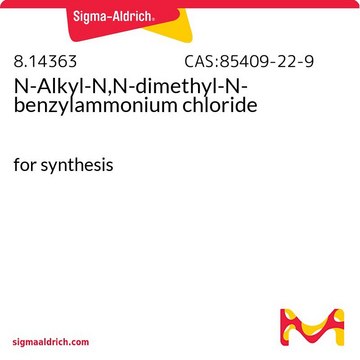Kluczowe dokumenty
30326
EMPIGEN® BB detergent
~30% active substance
Synonim(y):
N,N-Dimethyl-N-dodecylglycine betaine, N-(Alkyl C10-C16)-N,N-dimethylglycine betaine
About This Item
Polecane produkty
opis
zwitterionic
Poziom jakości
Formularz
liquid
skład
solid content, 35.0-45.0 % (w/v)
stężenie
~30% active substance
CMC
1.6-2.1 mM (20-25°C)
gęstość
1.030-1.060 g/mL at 20 °C
absorpcja UV
λ: 417 nm Amax: ≤0.055
λ: 441 nm Amax: ≤0.037
ciąg SMILES
CCCCCCCCCCCC[N+](C)(C)CC([O-])=O
InChI
1S/C16H33NO2/c1-4-5-6-7-8-9-10-11-12-13-14-17(2,3)15-16(18)19/h4-15H2,1-3H3
Klucz InChI
DVEKCXOJTLDBFE-UHFFFAOYSA-N
Szukasz podobnych produktów? Odwiedź Przewodnik dotyczący porównywania produktów
Powiązane kategorie
Zastosowanie
Empigen BB is a useful detergent that has been used in the solubilization of membrane proteins and biochemical analysis of keratins. It not only helps to solubilize bigger amounts of protein but it also maintains antibody reactivity. It has been also used in the purification of leucine-rich repeat kinase 2 (LRRK2) in Escherichia coli during research in Parkinson′s disease. The use of Empigen in the preparation of viral antigens is being increasing due to its effectivity in giving greater antibody responses.
Informacje prawne
Hasło ostrzegawcze
Warning
Zwroty wskazujące rodzaj zagrożenia
Zwroty wskazujące środki ostrożności
Klasyfikacja zagrożeń
Eye Irrit. 2 - Skin Irrit. 2 - STOT SE 3
Organy docelowe
Respiratory system
Kod klasy składowania
10 - Combustible liquids
Klasa zagrożenia wodnego (WGK)
WGK 1
Temperatura zapłonu (°F)
Not applicable
Temperatura zapłonu (°C)
Not applicable
Wybierz jedną z najnowszych wersji:
Certyfikaty analizy (CoA)
Nie widzisz odpowiedniej wersji?
Jeśli potrzebujesz konkretnej wersji, możesz wyszukać konkretny certyfikat według numeru partii lub serii.
Masz już ten produkt?
Dokumenty związane z niedawno zakupionymi produktami zostały zamieszczone w Bibliotece dokumentów.
Klienci oglądali również te produkty
Nasz zespół naukowców ma doświadczenie we wszystkich obszarach badań, w tym w naukach przyrodniczych, materiałoznawstwie, syntezie chemicznej, chromatografii, analityce i wielu innych dziedzinach.
Skontaktuj się z zespołem ds. pomocy technicznej














